To bateria 10 kW wystarczająca do prowadzenia domu?
Podczas eksploracji domu w magazynie energii domowej, Jedno z pierwszych pytań dotyczy zawsze wielkości i pojemności. Widzisz liczby takie jak „10kW" I cudowne, „Czy to wystarczy, aby poprowadzić mój dom podczas przerwy w dostawie zasilania?" To kluczowe pytanie, Odpowiedź zależy od tego, co chcesz zasilać i jak długo.
Pierwszy, Wyjaśnijmy kluczowy termin. Zasilanie baterii jest w kilowatach (kW), Ale jego pojemność magazynowania energii jest w kilowatogodzinach (kWh). Kiedy ludzie pytają o baterię „10 kW" dla środowiska wykonawczego, Prawie zawsze oznaczają baterię 10 kWh. Bateria 10 kWh jest często wystarczająca, aby uruchomić niezbędne obciążenia domowe - jak światła, lodówka, i Internet - przez wiele godzin lub na noc. Jednakże, Na ogół nie wystarczy, aby uruchomić cały dom, Zwłaszcza z dużymi obciążeniami, takimi jak klimatyzacja o dużej mocy, przez dłuższy czas.
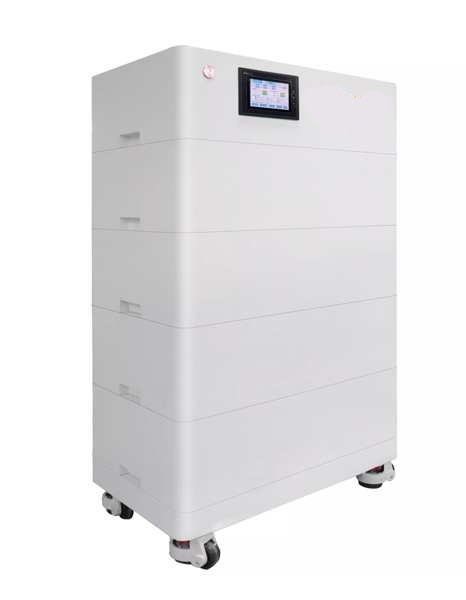
Na Gycx Solar, Specjalizujemy się w projektowaniu akumulator domowy, który można układać w stosy Systemy, które są idealnie rozmiarowe dla potrzeb naszych klientów, Niezależnie od tego, czy jest to niezbędne kopie zapasowe podczas tajfunu, czy do maksymalizacji oszczędności energii słonecznej. Zanurzmy się w szczegóły.
Co to są baterie ułożone?
Często słyszysz nowoczesne rozwiązania magazynowania energii określane jako „ułożone w stos" lub „możliwe do układania" baterie. Co to oznacza, i jak różni się od jednego, samodzielna bateria?
Ułożone baterie, lub „Baterie do układania w stosy," są modułowymi jednostkami magazynowymi energii specjalnie zaprojektowanymi do fizycznego umieszczenia razem i elektrycznie połączonych, aby utworzyć większy, Ujednolicony bank baterii. Każdy moduł to samodzielna bateria (Często stosowanie bezpiecznej chemii litowej LFP z własnym BMS) To działa jako element konstrukcyjny. Ta konstrukcja pozwala łatwo skalować pojemność systemu, dodając więcej modułów, Tworzenie niestandardowego i przyszłościowego rozwiązania energetycznego.
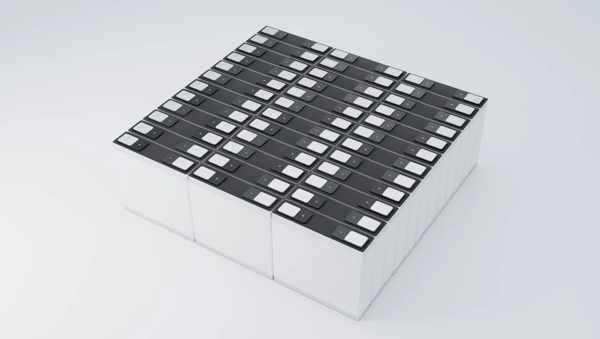
Nurkuj głębiej: Moc modułowej konstrukcji
Koncepcja akumulator domowy, który można układać w stosy jest zbudowany na kilku kluczowych zasadach:
- Modułowość: Każda bateria to standaryzowany moduł (NP., 5kWh). To pozwala zacząć od potrzebnej pojemności i dodać więcej później.
- Skalowalność: To jest podstawowa korzyść. Jeśli kupisz pojazd elektryczny w przyszłości, Możesz po prostu dodać kolejny moduł baterii do stosu zamiast wymiany całego systemu.
- Zaprojektowany dla bezpieczeństwa: Te moduły są zaprojektowane z funkcjami bezpiecznego układania fizycznego (Jak blokowanie obudów lub montażu stojaka) i mają chronione zaciski do bezpiecznego połączenia elektrycznego.
- Integracja inteligentna: Każdy moduł ma swój własny system zarządzania akumulatorami (BMS), i są zaprojektowane do komunikowania się ze sobą i twoim falownikiem słonecznym, aby działać jako singiel, inteligentny, i wysoce wydajny bank baterii.
To podejście, którego używamy w Gycx Solar, zapewnia naszym klientom elastyczną i opłacalną ścieżkę niezależności energetycznej.
Jak długo będzie trwała bateria 15 kWh?
Zrozumienie środowiska wykonawczego jest kluczem do rozmiaru baterii. Jeśli bateria 10 kWh nie wystarczy na cały dom, O ile więcej czasu daje większa bateria 15 kWh?
A 15Bateria KWH sklepów 50% więcej energii niż bateria 10 kWh, Więc to potrwa 50% dłużej podczas zasilania tych samych obciążeń gospodarstwa domowego. Na przykład, Jeśli zbiór niezbędnych urządzeń rysunkowy 500 Watts wyczerpałby baterię o pojemności 10 kWh 20 godziny, To samo obciążenie byłoby zasilane baterią o pojemności 15 kWh przez około 30 godziny.
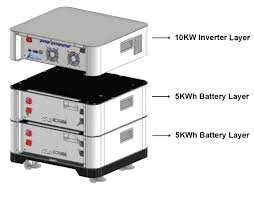
Nurkuj głębiej: Praktyczne porównanie środowiska wykonawczego
Spójrzmy na matematykę z kilkoma powszechnymi ładunkami gospodarstw domowych w Korei Południowej:
Formuła: Czas wykonawczy (Godziny) = Pojemność baterii (w WH) / Obciążenie (w Watts)
- Bateria 10 kWh = 10,000 Wh
- Bateria 15 kWh = 15,000 Wh
| Scenariusz | Średni obciążenie | 10Czas wykonywania baterii KWH | 15Czas wykonywania baterii KWH |
|---|---|---|---|
| Tylko niezbędne (Lodówka, światła, Wi-Fi, telewizja) | 500 Watts | ~ 20 godzin | ~ 30 godzin |
| Umiarkowane użycie (Elementy zasadnicze + Kuchenka ryżowa, Komputer stacjonarny) | 1,500 Watts | ~ 6,7 godziny | ~ 10 godzin |
| Ciężkie (Elementy zasadnicze + Klimatyzator jednopokojowy) | 2,500 Watts | ~ 4 godziny | ~ 6 godzin |
Jak widać, Ta dodatkowa pojemność 5 kWh w systemie 15 kWh ma znaczącą różnicę. Może to być margines, którego potrzebujesz, aby uruchomić klimatyzator przez kilka wygodnych godzin podczas gorącej letniej nocy lub dać ci dodatkowy dzień bezpieczeństwa. Rozmiar z akumulator domowy, który można układać w stosy System jest łatwy - często jest tak proste, jak dodanie jeszcze jednego modułu.
Czy akumulatory zasilania są tego warte?
Inwestuje w modułowy, Układalny system baterii - „Stos Power” - inteligentna decyzja finansowa? Czy korzyść z posiadania tej skalowalnej mocy kopii zapasowej i magazynowania słonecznego uzasadnia koszty?
Tak, dla większości właścicieli domów, Układalny system akumulatorów to doskonała inwestycja. Wartość pochodzi z trzech kluczowych obszarów:
- Oszczędności finansowe: Przetwarzając nadmiar energii słonecznej do wykorzystania w godzinach szczytowych, Możesz znacznie zmniejszyć rachunki za energię elektryczną od dostawców takich jak Kepco.
- Bezpieczeństwo energetyczne: Zapewnia nieoceniony spokój i płynna moc tworzenia kopii zapasowych podczas przerwy spowodowanych tajfunami lub innymi problemami z siatką.
- Elastyczność w przyszłości: Możliwość łatwego zwiększenia wydajności później chroni początkową inwestycję i pozwala systemowi dostosować się do zmieniających się potrzeb energetycznych.
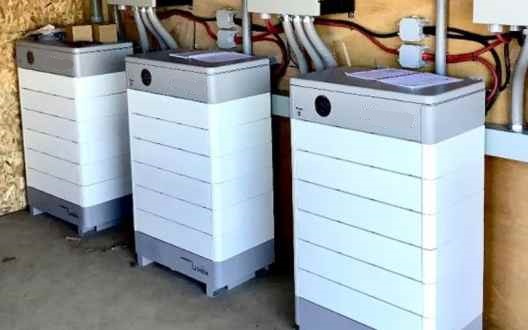
Nurkuj głębiej: Zwrot z inwestycji
Spójrzmy na propozycję wartości:
- Redukcja rachunku: Akumulator pozwala zmaksymalizować „samopomyślność słoneczną." Zamiast sprzedawać nadmiar energii słonecznej do sieci, przechowujesz go i używasz samodzielnie, gdy energia elektryczna jest najdroższa. To bezpośrednie przesunięcie jest najszybszym sposobem, aby zobaczyć zwrot z inwestycji słonecznych i baterii.
- Zasilanie awaryjne: Jaki jest koszt awarii zasilania? Dla rodziny, Może to oznaczać zepsute jedzenie, bez świateł, I brak Internetu. Dla kogoś pracującego z domu, Oznacza to utraconą wydajność. Bateria zapewnia płynne, cichy, i automatyczna moc w chwili niepowodzenia siatki.
- Skalowalność: To wyjątkowa korzyść z możliwego do ustawiania projektu. Nie musisz kupować ogromnego, dziś system duży. Możesz zacząć od systemu 10 kWh i, Jeśli później kupisz pojazd elektryczny lub zainstaluj klimatyzator, Możesz po prostu mieć profesjonalistę dodaj kolejny moduł 5 kWh lub 10 kWh. To sprawia, że magazynowanie energii jest bardziej dostępne i dostosowywalne.
Gycx Solar Story: „Klient w Seulu wahał się przed kosztem dużej baterii. Zainstalowaliśmy starter 10 kWh System System. Rok później, Kupili EV. Uaktualnienie było proste i opłacalne-właśnie dodaliśmy drugi moduł 10 kWh do ich istniejącej konfiguracji. Uwielbiali elastyczność."
Co to jest 80 20 zasada dla baterii litowych?
Być może słyszałeś o "80/20 reguła1" do ładowania telefonów lub laptopów i zastanawiał się, czy dotyczy dużych akumulatorów domowych. Co to za zasada, I czy to ważne dla twojego Zdrowie baterii2?
Zasada „80/20," dokładniej nazywany „Reguła 20-80," jest wytyczną dotyczącą maksymalizacji żywotności cyklu niektórych rodzajów akumulatorów litowo-jonowych. Sugeruje to codzienne użytkowanie, Powinieneś spróbować zachować stan naładowania baterii między 20% I 80%. Unikanie skrajności pełnego 100% ładunek i głęboki 0% Rozładowanie może zmniejszyć obciążenie baterii i pomóc jej dłużej.
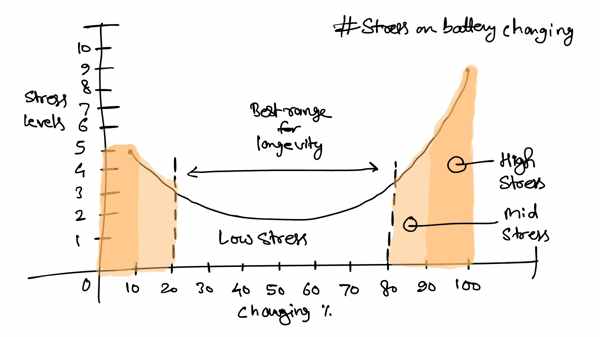
Nurkuj głębiej: Najlepsza praktyka długowieczności baterii
Oto bliższe spojrzenie na zasadę i sposób, w jaki dotyczy ona akumulator domowy, który można układać w stosy:
- Dlaczego to działa: Akumulatory litowo-jonowe doświadczają najbardziej chemicznego i mechanicznego stresu, gdy są przy bardzo wysokich lub bardzo niskich napięciach, które odpowiadają bycie prawie pełnym lub prawie pustym. Działając w „słodkim miejscu" W środku jest delikatniejszy na wewnętrznych komponentach, prowadząc do dłuższej ogólnej żywotności.
- Czy jest to konieczne dla LFP? Ta zasada jest najbardziej krytyczna dla chemii takich jak NMC, które są powszechne w elektronice użytkowej. The LFP (Fosforan żelaza litu) Chemia stosowana w najlepszych systemach akumulatorów domowych jest znacznie bardziej solidna i tolerancyjna do naładowania 100%. Jednakże, Podstawowa zasada, że płytsze cykle są mniej stresujące niż głębsze cykle nadal są prawdziwe.
- Jak sobie z tym radzą nowoczesne systemy: Wspaniała wiadomość jest taka, że nie musisz zarządzać tym ręcznie! Nowoczesna Bess z GYCX Solar pozwala zaprogramować te granice bezpośrednio w oprogramowaniu systemu. Powszechne i wysoce skuteczne jest ustawienie:
- Ustaw rezerwę kopii zapasowej: Możesz powiedzieć systemowi, „Nigdy nie rozładowuj poniżej 20% Podczas normalnego codziennego użytkowania; Zapisz to 20% za awarię zasilania." To automatycznie zapobiega głębokim codziennym zrzutom i gwarantuje, że zawsze masz rezerwę mocy.
- System będzie następnie przełączać się między poziomem rezerwy (NP., 20%) I 100% każdego dnia, który jest całkowicie bezpieczny i normalny dla trwałych baterii LFP. To daje najlepsze z obu światów: Maksymalne wykorzystanie energii słonecznej i chronionej rezerwy kopii zapasowych, Wszystko jednocześnie promując długą i zdrową żywotność dla Twojej baterii.
Bateria 10 kWh jest potężnym punktem wyjścia do magazynowania energii domowej, ale jego prawdziwy potencjał jest odblokowany w modułowym, akumulator domowy, który można układać w stosy system. Takie podejście zapewnia elastyczność w doskonałym rozmiarze systemu, Bezpieczeństwo długotrwałej technologii LFP, oraz wartość przyszłej inwestycji. Rozumiejąc najlepsze praktyki, takie jak 20-80 reguła3, Możesz upewnić się, że Twój system jest niezawodnie przez wiele lat.
Jeśli masz więcej pytań na temat rozmiaru baterii do domu lub chcesz zbadać korzyści ze skalowalnego systemu, Nasz zespół ekspertów w Gycx Solar jest tutaj, aby pomóc. Skontaktuj się z nami w celu konsultacji profesjonalnych!
Zrozumienie 80/20 Zasada może pomóc w optymalizacji życia baterii i wydajności. ↩
Badanie wskazówek dotyczących konserwacji zdrowia baterii może znacznie zwiększyć żywotność i wydajność baterii domowej. ↩
Dowiedz się o 20-80 rządzić, aby zoptymalizować wykorzystanie baterii i skutecznie przedłużyć jego żywotność. ↩
